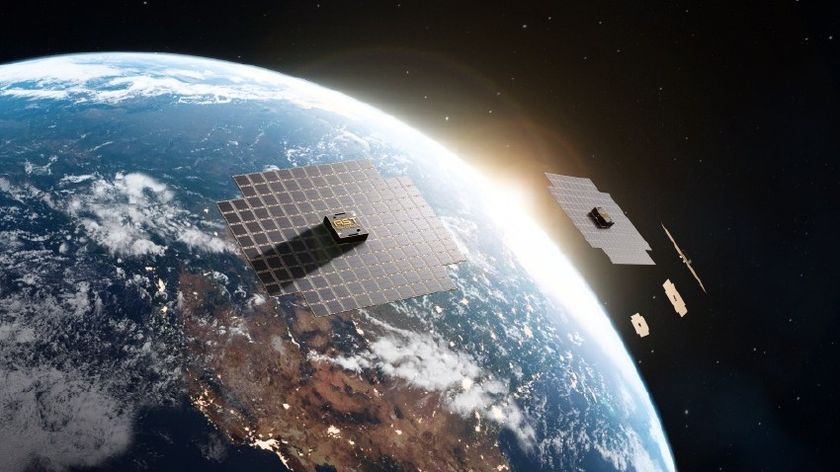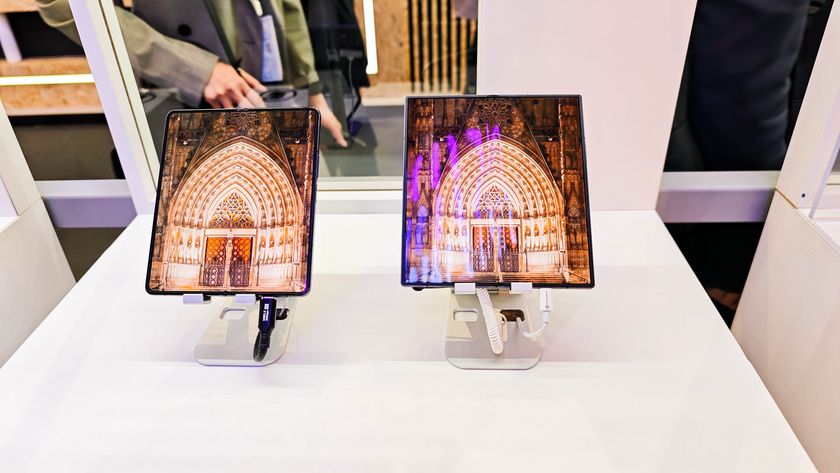5G: Everything you need to know
What is 5G technology? Here's the info on understanding the technology.
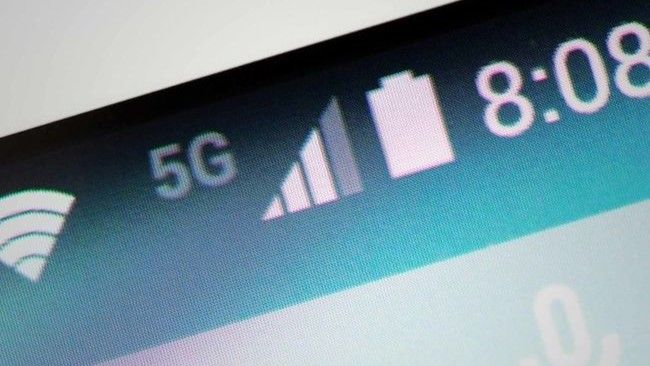
What is 5G technology exactly? This question is expected when you're unfamiliar with technology and even more so when you see it on most devices.
You don't have to have the best Android phone to use the 5G technology, but when you know the answer to how this technology is better than 4G or 3G, it's something you'll always look for in the specification list. Essential things to consider are how 5G affects your device's battery and whether you need to upgrade.
- Carrier deals: Verizon | AT&T | T-Mobile | Mint Mobile | Visible
5G vs. 4G
At its core, 5G is the fifth-generation wireless technology standard, which comes after 4G and 3G. It refers to the technology used to connect your phone, tablet, laptop, or anything with a 5G-compatible chipset. In the U.S., AT&T, Dish Wireless, T-Mobile, UScellular, and Verizon use this new standard.
However, not every upgrade to a carrier’s wireless network counts as a new generation. As with the move from 3G to 4G, a well-developed older network may deliver stronger speeds for a while. This has led to some carriers like AT&T renaming some network connections on LTE to 5G despite not actually having a 5G connection.
The highlight of true 5G can be summed up quickly: It has the potential to be exponentially faster than 4G while also lowering the latency between your phone and whatever it's trying to connect to. It's also coming at a point when carriers are gaining access to new chunks of the spectrum, such as the C-band, which is medium amid the high and low bands.
While most new phones support the tech, 5G can be used for a lot more. Naturally, connected devices like cars and notebook PCs are two examples; 5G also has the capacity to serve as a home internet provider in some areas. Both T-Mobile and Verizon are selling a home internet service based on their 5G networks. Coverage is important and T-Mobile states that they have more coverage than Verizon and AT&T combined.
Data demand
5G spreads fast and now covers most Americans in some form, but for many people, it's not what they expected. 5G refers to 5G NR (New Radio), which contains many different technologies with different implementations. 5G promises better speed and lower latency, though your mileage may vary depending on exactly what type of 5G coverage and device you have.
Be an expert in 5 minutes
Get the latest news from Android Central, your trusted companion in the world of Android
5G has three leading frequency bands to deliver various cellular network experiences. These connections are low-band, mid-band, and mmWave (millimeter wave). Low-band and mid-band 5G are collectively referred to as Sub-6, indicating that they are below 6GHz. Sub-6 also includes C-band. These 5G terms can get confusing, but the most important thing to remember is that the lower bands have greater coverage while higher bands have more significant speed potential.
All major carriers are looking toward combining these 5G categories to build a complete network, depending on the density and geographic challenges in each area.
Frequency info
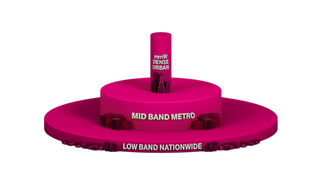
T-Mobile uses a combination of low-band n71 and n66 and mid-band n41 spectrum for most of its coverage. Lower frequencies have a greater range, so n71 5G at 600MHz is the backbone for most of T-Mobile's 5G coverage. Band n41 coverage adds greater capacity and speed to T-Mobile's network. While its coverage deficit means n41 will take longer to reach full coverage, T-Mobile has already covered more than 165 million people with this faster 5G. Finally, mmWave is being used to add capacity in the areas that need it most.
T-Mobile calls its 5G spectrum "Ultra Capacity 5G." Its approach to 5G is like a layer cake, with its three main spectrum types making up the tiers.
AT&T's 5G network started on mmWave and got off to a solid start, with more than dozens of cities getting some coverage. The real gains for AT&T came when it began deploying 5G on its 850MHz sub-6 spectrum. While the speeds weren't too impressive compared to fast LTE results, the rapid growth has been good for early adopters of 5G devices. AT&T has also started building mid-band 5G with a combination of spectrum, including C-band.
AT&T was the first carrier to deploy 5G with DSS, or dynamic spectrum sharing. This technology allows tower equipment to automatically allocate spectrum from 4G to 5G based on load.

Verizon started with mmWave, building its Ultra Wideband network in several cities. With the release of the iPhone 12, Verizon opened up its nationwide 5G network with a shared spectrum from its LTE coverage. Verizon used this shared spectrum to quickly deploy a 5G network without constructing new towers or securing a new spectrum. Since then, Verizon has significantly invested in the C-band spectrum to enhance its 5G Ultra Wideband network to offer its customers both faster speeds and wider coverage.
Verizon is catching up since it took one giant leap forward in the 5G race, tapering T-Mobile's advantage in consonance with Ookla’s newest market research.
mmWave is very fast but coverage is limited.
C-band has been performing admirably so far, with speeds around 600Mbps on the low end and as high as 1.4Gbps in ideal conditions. For the most part, customers will see speeds in the 500Mbps range depending on the distance of the towers. Verizon secured more C-band spectrum than AT&T; however, AT&T still has a solid chunk of mid-band spectrum following more recent FCC auctions. Verizon tends to be more trustworthy for rural and remote areas, but AT&T's 5G coverage surpasses Verizon's, as U.S. News states.
What is 5G SA?
As the name implies, 5G SA (short for 5G standalone) is a type of 5G network that can exist and operate independently without a legacy network (a network not based on IP (TCP/IP) protocol) supporting it. Why is this important? Because SA lets you connect directly to the fastest network without first connecting to an older network. This can help your connection feel more consistent as you switch towers and move in and out of 5G coverage.
Calling over 5G is important, so phones won't need to rely on 3G or 4G towers. This will also save battery life since phones won't need to keep switching between networks to make and receive calls as is with Non-Standalone 5G.
Most new 5G phones support SA out of the box, so there's not much to worry about on your end. Standalone 5G won't prevent your phone from connecting to LTE if 5G coverage is weak, either. It's something the end-user should never need to worry about.
What is 5G NSA?
Non-standalone 5G, known primarily as 5G NSA, is not what all carriers aim to use, but it's still part of the 5G structure. It's the stepping stone to 5G SA since it allows 5G to be used using the 4G infrastructure. 5G NSA is of great help in areas where carriers can't offer 5G SA. NSA is faster than 4G but not as fast as 5G SA (standalone). With 5G, NSA carriers can give customers the speed they want without investing in new equipment in the transition. The downside to users is that more battery power is used for the device by being connected to 4G and 5G. However, carriers are investing more in 5G SA due to the low latency and the support for many devices, among other reasons.
5G support
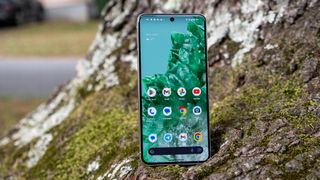
Most new phones you can get right now come with support for 5G. Whether you're looking for something cheap or want the most advanced flagship, 5G is probably included. If you buy your phone unlocked, you can take it to another carrier if its 5G bands are supported. But, so you won't get stuck with a phone you can't use on your preferred carrier, it's best to research beforehand. The most popular phones, like the Galaxy S24 series, Pixel 8 series, and iPhone 15 series, support all major carriers.
AT&T doesn't play as nicely regarding 5G support for some 5G-capable phones from other brands. For instance, some compatible OnePlus phones can't access AT&T's 5G network. If you want to bring a phone to AT&T 5G, double-check with customer support, or you may get stuck with LTE on your new phone.
5G internet

Verizon was fast out of the gate with its 5G home internet service based on its Ultra Wideband 5G network. This network is capable of fiber-like speeds, with different peaks depending on the specific technology and plan you choose. Ping times are also great on Verizon's network. As expected, you'll need to install a rather large antenna in one of your windows, and availability is limited to those with a good connection to the mmWave network.
T-Mobile's home internet service focuses a lot more on rural and suburban areas but continues to grow. T-Mobile's network performance varies depending on which of its towers you can connect to, the time of day, and the device. With a good connection on T-Mobile's band n41 5G, you can get 300Mbps, with peaks close to 1Gbps. Still, with good rural 5G coverage, T-Mobile is a great option for those with limited connectivity options.
When can I get 5G?
5G coverage has grown exponentially and now reaches more than 310 million people on T-Mobile. AT&T and Verizon continue to struggle for positions two and three for nationwide coverage.
T-Mobile's coverage superiority continues into the mid-band, with more than 210 million people now covered by T-Mobile's 2.5GHz band n41 Ultra Capacity 5G. Verizon is catching up with C-band, but there’s a long road ahead. T-Mobile benefits from a head start thanks to the majority of its mid-band spectrum not getting tied up in regulatory limbo for months.
For now, 5G coverage looks a lot more like LTE coverage. Check carriers' individual maps to see their range, including Ultra Capacity and mmWave coverage.
Verizon and AT&T have continued to build mmWave in dense urban areas, though coverage is very low. They have focused on the most densely populated areas, including airports and stadiums.
Should you upgrade?
The sheer amount of data that 5G can transfer at high speeds means it can do much more than bring fast downloads to your phone. Many people use the currently available sub-6 5G connections like a robust LTE connection, but the future is much brighter with a combined network and multiple bands of 5G available. The immediate benefits could be greater if you live in a congested area.
For home internet, 5G speeds will stay higher than LTE even with a lot of connections, and it will be easier than ever to deliver high-speed internet to people, even when they are in an older building that hasn't been upgraded for fiber. For now, 5G feels faster than LTE, but more applications will take advantage of the improved connectivity as the infrastructure gets built.
If you're buying a new phone, it's more than likely going to include 5 G. And the best cell phone plans come with 5G support. If you're wondering if it's worth getting an upgrade specifically for 5G, it's probably not. LTE is still fast enough for most of what we do online, and until the C-band gets fully built, that's not likely to change for a while.
- Carrier deals: Verizon | AT&T | T-Mobile | Mint Mobile | Visible
When Samuel is not writing about networking or 5G at Android Central, he spends most of his time researching computer components and obsessing over what CPU goes into the ultimate Windows 98 computer. It's the Pentium 3.
- Judy Sanhz
- Patrick FarmereCommerce Editor
You must confirm your public display name before commenting
Please logout and then login again, you will then be prompted to enter your display name.

